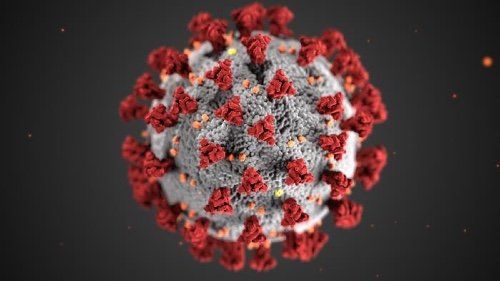5 Reasons to Choose Ultrasound Over CT or X-ray During COVID
Emergency medicine expert panel outlines support for using point-of-care ultrasound with patients with suspected infection.

Use of point-of-care ultrasound (POCUS) was already on the rise throughout the radiology industry before the COVID-19 outbreak. But, as the virus has continued to spread, the role for the modality as a comprehensive diagnostic tool in emergency settings has expanded and strengthened.
Recently a 9-expert panel hosted by the American College of Emergency Physicians discussed the use of POCUS with COVID-19 patients during a mid-March town hall meeting. The group, which included emergency medicine experts from the United States, as well as Spain and Italy, published a summary of their findings in Academic Emergency Medicine in late April.
The goal, said lead report author and panel moderator Rachel Liu, M.D., director of point-of-care ultrasound education at Yale School of Medicine, is to highlight the efficacy of this modality and outline recommendations for its use with this patient group.
“Ultrasound as a diagnostic test presents distinct advantages for imaging in COVID-19. It is a mobile technology that can be used in diverse environments, including in triage tents or makeshift hospitals that are now established for COVID-19 evaluation at many centers,” she said. “POCUS, in particular, where the clinician both performs and interprets the images immediately at the bedside, can minimize involvement of additional personnel in an infectious situation and provide immediate diagnostic information.”
Even though chest CT has been highlighted as the go-to modality for managing COVID-19-positive patients, the experts offered up five reasons why POCUS should be used more widely with those suspected of infection.
1. Rule out other pulmonary diseases. Lung ultrasound can help you eliminate pneumothorax or pleural effusion as diagnostic possibilities, Liu said. Even if a patient is already sick, being able to strike these conditions off your list can be helpful.
2. Help with venous access. Particularly with critically ill patients who require peripheral or central venous access, POCUS can serve as a guide. Respiratory distress – caused by COVID-19 or other viruses – can mean some patients can’t lie flat, so having ultrasound can facilitate central venous access. It can also help diagnose venous thromboembolism.
3. Pinpoint any new heart issues or ones that COVID-19 has made worse with cardiac ultrasound.
“Early reports suggest there may be direct cardiac ramifications of COVID-19, including gross left ventricular dysfunction and potential right ventricular dilation,” said Liu and her colleagues. “Additional to lung ultrasound, cardiac views including the inferior vena cava can help identify or exclude cardiac dysfunction.”
Consequently, Liu and her team suggested that emergency departments integrate focused cardiac ultrasound into symptomatic COVID-19 patient assessments and work-ups.
4. Ultrasound – regardless of the results – can be clinically beneficial. Normal findings can help patients and providers avoid unnecessary additional imaging, the team said. Any abnormalities characteristic of COVID-19 can help you direct a patient to the appropriate hospital unit early, often even before lab results return.
“Observations that ultrasound findings may precede clinical symptoms suggest that ultrasound may identify more severe illness prior to the development of severe symptoms,” explained Liu’s team.
5. POCUS can help control viral exposure. If a clinician can perform and interpret the exam at the bedside, then ultrasound can limit the number of healthcare workers put at risk. The sonographer must be sure to use all appropriate personal protective equipment and disinfect the machine per protocol.
Although further research is needed on ultrasound’s role as a screening tool for establishing admission thresholds and level of care, as well as its potential novel uses in home telemonitoring of discharged patients, Liu’s team reiterated that the modality can play a useful part in navigating this pandemic.
“Incorporating ultrasound into the evaluation of COVID-19 patients will depend upon available resources, expertise of personnel, and logistic configuration unique to each situation,” the team contended. “Ultrasound appears promising as a first-line and comprehensive diagnostic imaging modality in suspected of diagnosed COVID-19.”
Large Study Affirms Safety of Ultrasound Enhancing Agents for Echocardiography
May 16th 2025Those receiving ultrasound enhancing agents (UEAs) for transthoracic or stress echocardiography had lower odds of all-cause death in comparison to patients who did not have UEAs, according to a nationwide study involving 11.4 million patients.